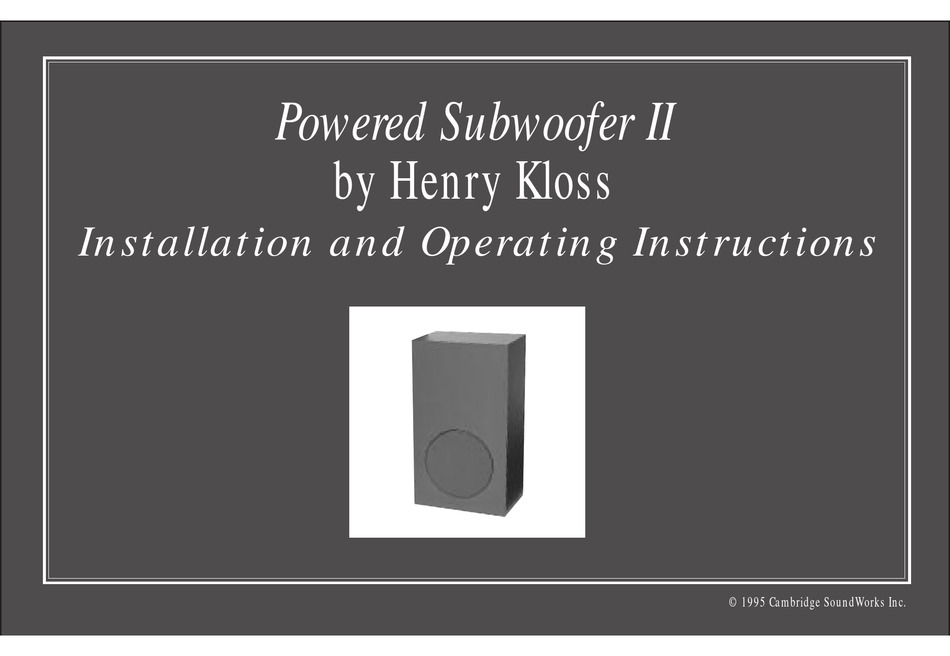
Although there were some differences between the resulting measurements (because of unavoidable reflections), certain key features appeared in all the MLS response curves.

We also made a number of quasi-anechoic frequency-response measurements using the MLS program of our Audio Precision System One test set, with microphone distances of 1 and 2 meters, and some ground-plane measurements to minimize the effect of floor reflections. The bass output dropped at 12 dB per octave below 80 Hz in the composite curve, the overall response was a very good +/-4 dB from 56 Hz to 20 kHz. Overall, the woofer response seemed to be 3 to 5 dB higher than the averaged tweeter output. The woofer response, flat within 2.5 dB from 75 to 600 Hz, sloped down by about 3 or 4 dB above that point as it overlapped the room curve. It had a few +/-0.75-dB variations and an overall downward shift of about 1 dB above 1 kHz, but those were the only anomalies in that range. Our averaged room-response curve from the two speakers spliced to the close-miked woofer response with about an octave of overlap, producing a composite curve that was unusually uniform from 1 to 20 kHz. This will prevent your being misled by the particular characteristics of a particular recording." That is valid advice for judging any speaker, and I could not have said it better myself. In addition to the usual suggestions on placement and connection-18-gauge or thicker wire is recommended, with a refreshing note that "there is no audible benefit with these or other speakers from very heavy (and expensive) 'audiophile' speaker cable"- other universally applicable statements inform the user that "the apparent fullness of the sound is a function of mid-bass rather than low bass" and that the "subjective 'openness' is not so much a function of the high treble as it is of the lower midrange." Finally, there is the relatively obvious (but often overlooked) suggestion that "program material varies greatly, so be sure to listen to a variety of recordings. Heavy-duty binding-post input terminals, compatible with single or dual banana plugs, lugs, or wire ends, are recessed into the back of the cabinet.Īlthough the Model Six comes with none of the usual speaker performance specifications, a couple of pages of its installation instructions contain more meaningful and useful information about speakers than a comparable amount of acoustic-measurement data or even many far longer treatises. Not a speaker that needs to be hidden from view, the Model Six has an attractive simulated-woodgrain finish in a choice of oak, teak, or black ash, and a nonremovable cloth grille in medium charcoal gray further enhances its appearance. It is based on a newly designed 8-inch acoustic-suspension woofer that crosses over at 2 kHz to a 1.75-inch cone tweeter with a 0.5-inch center dome (the same tweeter used in Cambridge SoundWorks' costlier Ensemble systems). Like most Kloss speakers, the Model Six is a two-way system. The new Model Six, named for Kloss's KLH Model Six of the 1960's, brings that speaker's design approach into the 1990's. Most recently he has been associated with Cambridge Sound Works, where he has developed a line of loudspeakers that carry on the tradition of offering exceptional performance for a modest price.



In a career spanning four decades, Henry Kloss has been responsible for the design or production of some of the most successful and trend-setting loudspeakers of their times, including the AR-1, AR-2, and AR-3, the KLH Model Six, and the original Large Advent.


 0 kommentar(er)
0 kommentar(er)
